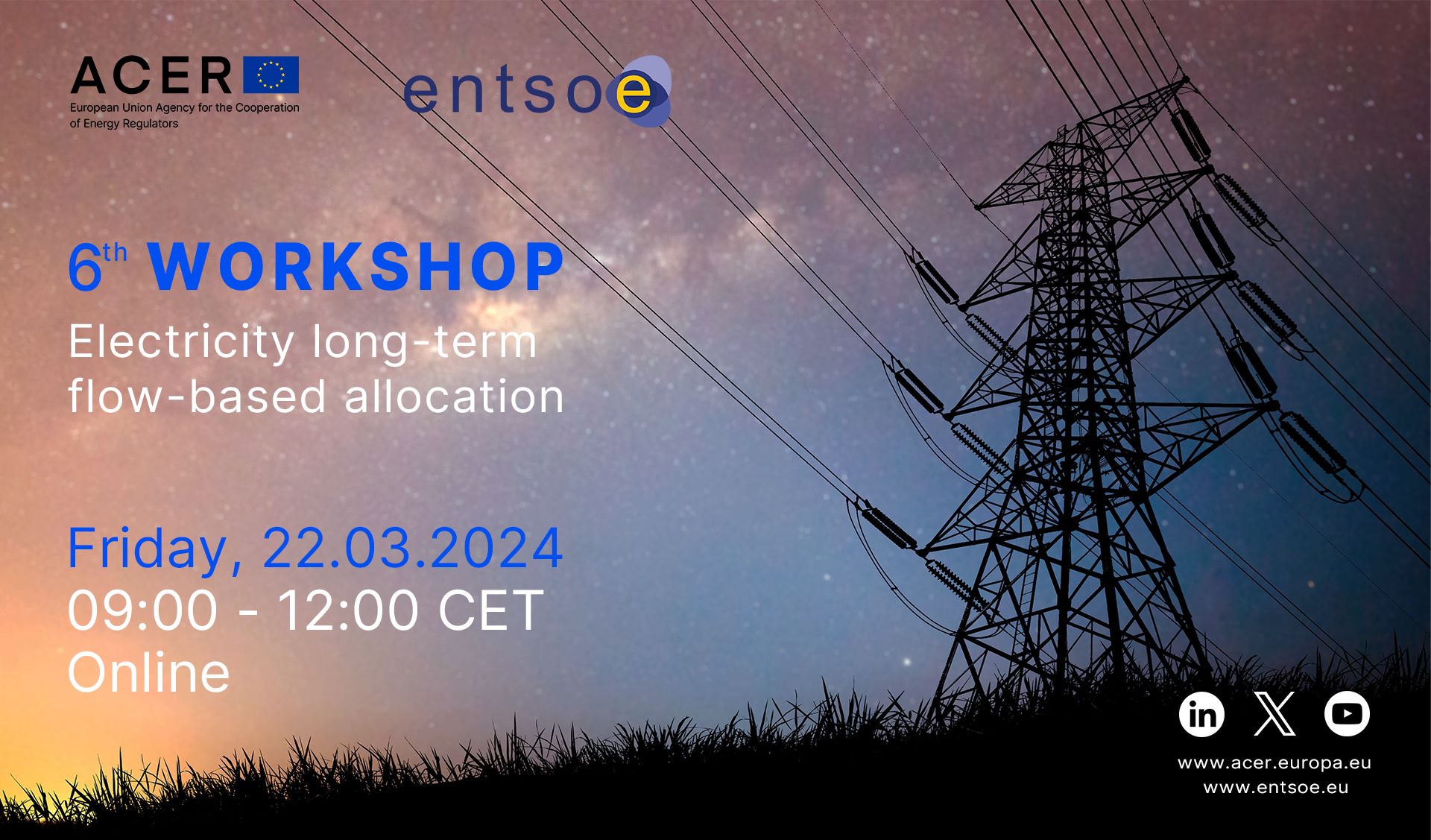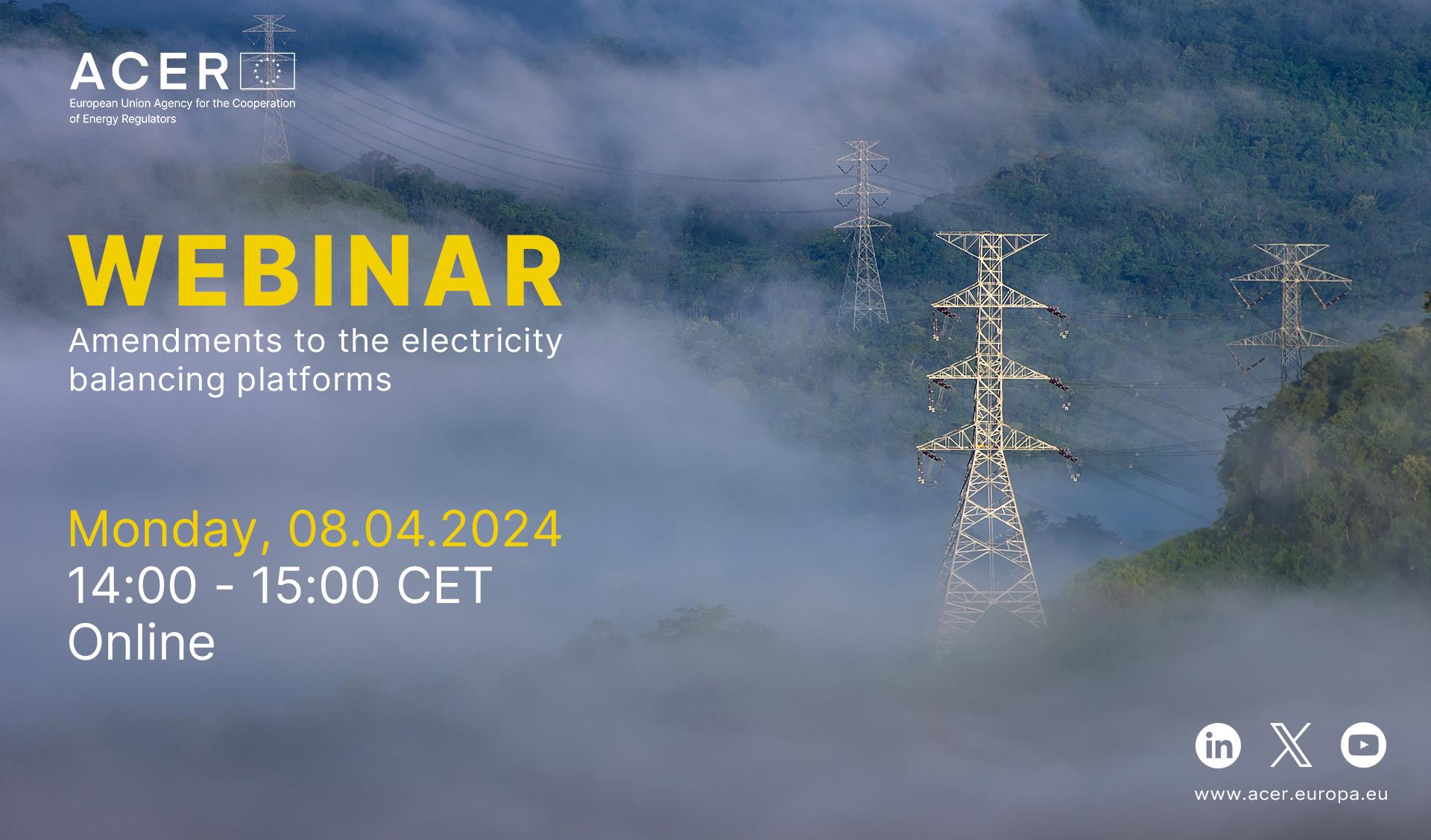6th ACER-ENTSO-E workshop: electricity long-term flow-based allocation

ACER will evaluate amendments to the pricing methodology and framework related to electricity balancing platforms

ACER will evaluate amendments to the pricing methodology and framework related to electricity balancing platforms
What is it about?
On 7 February 2024, ACER has received the transmission system operators’ (TSOs’) proposal to amend:
The pricing methodology establishes a harmonised approach for calculating prices across the different EU balancing platforms and increases the efficiency of the balancing energy markets.
The aFRR implementation framework describes the design of the platform for the international coordination of automated frequency restoration and stable system operation (PICASSO), which is a key element in the European balancing markets integration.
What are the amendments about?
In relation to the pricing methodology, the TSOs are proposing to:
- Reduce the technical price limits of the integrated balancing energy markets from 99,999 to 15,000 EUR/MWh. This implies that balance service providers will not be allowed to bid below -15,000 EUR/MWh or above 15,000 EUR/MWh, after July 2026.
- Lower the transitional price limit (valid until July 2026) to 10,000 EUR/MWh. Similarly, during this transitional period, balance service providers will only be allowed to bid between the price range from -10,000 to 10,000 EUR/MWh.
- Use an alternative way to compute the prices from the PICASSO platform to better reflect the bids activated by the TSOs.
In terms of the aFRR implementation framework, the TSOs propose introducing the possibility of using an elastic demand. This would allow them to price a segment of their demand and therefore establish a threshold beyond which they are unwilling to activate balancing energy. This would improve the TSOs' ability to manage the balance between cost efficiency and the need for maintaining high-quality frequency.
How does ACER contribute?
ACER will review the TSOs’ proposals to ensure they align with the Regulation on electricity balancing and fulfil the obligations set out by the Regulation on the internal market for electricity.
What are the next steps?
To gather inputs from stakeholders and inform its decision-making process, ACER will:
- run a public consultation from 26 March to 23 April 2024;
- hold a webinar on 8 April 2024 to present and discuss the main elements of ACER’s public consultation.
ACER will reach a decision by 7 August 2024.
ACER webinar: amendments to the electricity balancing platforms
ACER webinar: amendments to the electricity balancing platforms

Workspace for event #12680
REMIT breach: Italian energy regulator (ARERA) fines ENET Energy S.A. €940,000 for gas market manipulation

REMIT breach: Italian energy regulator (ARERA) fines ENET Energy S.A. €940,000 for gas market manipulation
What is it about?
ARERA, the Italian energy regulator, has imposed a €940,000 fine on ENET Energy S.A. (ENET) for sending false and misleading signals on the Italian gas market.
According to ARERA’s decision, on a single trading day in 2022, ENET nominated very high volumes of gas storage capacity (i.e. over-nomination), both for injections and for withdrawals. This, together with ENET’s trading activity, sent false and misleading signals regarding the overall system imbalance, prompting the gas Transmission System Operator (TSO) Snam Rete Gas S.p.A. (Snam) to trigger balancing actions to ensure the system’s stability.
Under the REMIT Regulation (EU) No 1227/201, practices that distort the energy market are strictly prohibited. This includes the use of any fictitious devices (in this case a misuse of the over-nomination mechanism) or deceptive actions designed to mislead market participants about the true state of supply, demand, or prices of wholesale energy products.
ARERA found that ENET’s conduct breached Article 2.2.a.iii and Article 5 of REMIT Regulation. ACER welcomes this decision by ARERA, promoting the transparency and integrity of the Italian gas market.
Access ARERA’s Decision (in Italian).
See the latest table of REMIT breach sanction decisions adopted by national regulatory authorities.
Check the ACER REMIT Guidance (6th edition) for more information on the types of trading practices which could constitute market manipulation under REMIT.
Interested in further information on enforcement decisions under REMIT? Check out ACER’s REMIT Quarterly reports.
INT (formerly known as IUK)
INT (formerly known as IUK)







REMIT breach: French energy regulator (CRE) fines Engie €500,000

REMIT breach: French energy regulator (CRE) fines Engie €500,000
What is it about?
CRE’s Dispute Settlement and Sanctions Committee (CoRDiS) has imposed a EUR 500,000 fine on Engie for insider trading on the French wholesale electricity market and for failing to publicly disclose inside information in an effective and timely manner.
REMIT Regulation (EU) No 1227/201 prohibits insider trading in Europe’s wholesale energy markets and establishes rules for the obligation to publish inside information.
Between 1 January 2019 and 31 December 2020, Engie breached Articles 3 and 4 of the REMIT Regulation on several occasions:
- Breach of the prohibition of insider trading by:
- Carrying out trading operations based on inside information (234 times); and
- Disclosing inside information outside the normal scope of the exercise of their duties (1 time).
- 22 instances of failing to publicly disclose, in an effective and timely manner, inside information related to the unavailability of their electricity generation facilities.
Insider trading, along with the failure to publicly disclose in an effective and timely manner inside information, severely compromises the integrity and transparency of the EU electricity market.
ACER welcomes this decision of the French energy regulatory authority promoting the transparency and integrity of the French electricity market.
Access the Decision and CRE’s press release (both in French).
See the latest table of REMIT breach sanction decisions adopted by national regulatory authorities.
Check the ACER REMIT Guidance (6th edition) for more information on the types of trading practices which could constitute market manipulation under REMIT.
Additional material on enforcement decisions under REMIT is accessible in the REMIT Quarterly reports that ACER publishes each quarter.